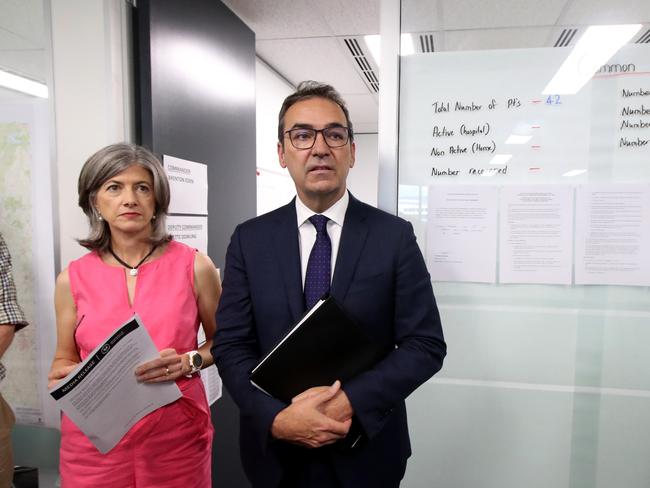Coronavirus: SA Health’s official emergency pandemic plan warns of ‘significant risks’ to state
The official coronavirus crisis blueprint has been published and the document lays bare the “significant risks” to South Australia that could overwhelm the health system.
Coronavirus News
Don't miss out on the headlines from Coronavirus News. Followed categories will be added to My News.
The coronavirus crisis poses a “significant risk” to South Australia because of a potential to cause “high levels” of disease and death, an official emergency plan warns.
In a stark warning, SA Health’s formal COVID-19 response, published on Monday, advises that if the pandemic hits severe clinical levels, all areas of the $6.4 billion system “will be stretched to capacity”.
It is the first time such specific details on the official COVID-19 fightback efforts have been published as authorities implore the public to heed urgent travel restrictions and social distancing.
Premier Steven Marshall and the state’s top public doctor have used the report as the basis for repeated warnings as they assure the public that extensive planning has been occurring for several weeks.
Mr Marshall, and chief public health officer, Associate Professor Dr Nicola Spurrier, warn the harsh measures are needed to “dampen the curve” and push an expected peak demand well past winter that will relieve the hospital, and intensive care, strain.

The blueprint, released exclusively upon request to The Advertiser, lays bare State Government concerns about the widespread community disruption the virus could trigger and suggests emergency laws may be needed.
“A viral respiratory disease pandemic represents a significant risk to South Australia, as it has the potential to cause high levels of morbidity (diseased state) and mortality (number of deaths), challenge the ability of the state health system to cope and disrupt the community socially and economically,” the report warns.
“This plan takes an emergency response approach and is readily integrated into broader emergency arrangements, including the importance of seeing the management of all hazards within an ongoing cycle of prevention, preparedness, response and recovery.”
The 52-page report, titled SA Health Viral Respiratory Disease Pandemic Response Plan, provides scenarios on three different levels of clinical severity.
In the low range the majority of case are mild meaning services will cope while moderate levels will leave hospitals under “severe pressure”.
In a severe scenario, the report warns: “If clinical severity is high, then widespread severe illness will cause concern and challenge the capacity of the health sector.
“All areas across the system will be stretched to capacity, especially primary care, acute care, pharmacies, nurse practitioners and aged care facilities, and mortuary services will be under pressure.
“Healthcare staff may themselves be ill or have to care for ill family members, while the demand for specialist equipment and personnel will also challenge capacity. Emergency legislation may be needed to support outbreak specific activities.”
The document, signed off by the highest levels of government, provides details on the “proportionate” strategies needed to tackle the global crisis.
It will be used in any future pandemics.
Headed by SA Health’s Disaster Preparedness and Resilience Branch, it outlines how multiple agencies have been involved in producing the guidance’s five stages – preparedness, standby, action, stand down and recovery.
Authorities have already planned, and announced, much of what the report discusses such as the impacts on schools, public transport, industrial relations and biosecurity.
Figures contained in the report reveal the disease has a fatality rate of 4.5 per cent, compared to 60 per cent for the 1996 “bird flu”, 34 per cent during the 2012 Middle East respiratory syndrome and 9.5 per cent for the 2002 SARS outbreak.
The data shows coronavirus, which was first reported in China’s Wuhan City in December last year – with pangolins feared to be the animal host – has so far infected at least 354,000 patients worldwide and killed more than 16,000.
The 2009 Swine Flu infected 762.6 million people worldwide but has a much lower fatality rate of 0.02 per cent.
Mr Marshall has said his government has a “strong plan” to tackle the pandemic for months, complete with scenario planning.
A government spokesman said: “The pandemic plan provides a high-level framework to guide local health networks as the Marshall Government continues to roll out its strong plan to deal with the virus.”
